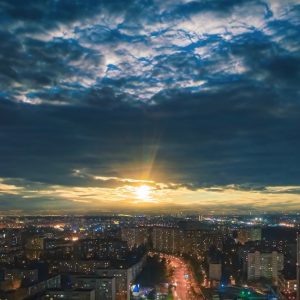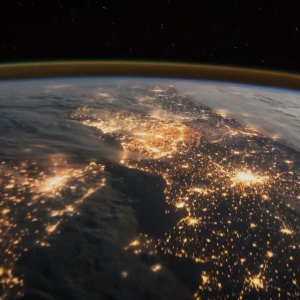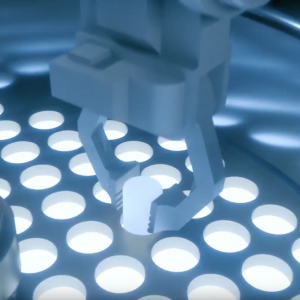Energy World
Learn about the energy mix
In this section
The Story of Energy

Learn about energy and where we get it from
Population growth, smart devices, the servers that power cloud storage… all these things and more mean the world’s demand for energy continues to grow. But many of the ways we’ve produced energy in the past release carbon into the atmosphere.
We now know that to fend off climate change, we have to take more carbon out of the atmosphere then we release into it sometimes known as Net zero/net carbon zero This is the goal of making sure the amount of carbon released into the atmosphere is equal to or less than the amount than is being removed from the atmosphere. This will reduce the amount of carbon in our atmosphere over time. By making sure we’re taking carbon out of our atmosphere, or preventing it from being released into the atmosphere in the first place, we can stop it from contributing to climate change. . So the challenge is to produce more energy and less carbon. To do this, we’ll have to radically change our Energy mix The energy mix is the combination of different primary energy sources used to generate energy. Primary energy sources are the raw materials we process to produce energy – like oil and gas, wind power and coal. Most of the UK’s energy mix is still provided by fossil fuels, but the industry is shifting towards more renewable sources of energy to help combat climate change. . While still using some Fossil fuels Fossil fuels are natural substances we process to create energy, like coal, oil and natural gas. These fuels were formed millions of years ago as living organisms decomposed, and this means that we can’t make any more – one day, fossil fuels will run out. , such as oil and gas, we’ll need to increase our use of other energy sources such as nuclear and hydrogen, and greatly increase our use of Renewable Renewable energy sources are primary energy sources which will never run out, unlike fossil fuels, which we can’t make any more of. Sunshine, wind and waves are examples of renewable energy sources, which are also better for the environment as they don’t produce carbon when we turn them into energy. such as wind and wave.
The Future of Energy

Discover how the world of energy is changing
The world of energy is already changing. Innovators, engineers and scientists are creating new energy sources to be part of a Sustainable low carbon energy mix Right now, the majority of our energy mix still comes from fossil fuels. As we work on how to reduce carbon emissions and switch to more renewable sources of energy, this balance will shift to a low carbon energy mix. Since these renewable energy sources will never run out, we’ll be able to count on them long into the future. . And a whole new world of career opportunities is opening up in areas including Robotics Robotics is the use of computer science and engineering to build and programme a machine capable of doing specific tasks. In the energy industry, this can be especially helpful in situations which would be too dangerous for humans, like taking video equipment to the seabed to examine pipelines. , Artificial intelligence/AI Artificial intelligence, often known as AI, is the ability of computers and robots to carry out tasks that require them to ‘think’ like a human. This means they need to do the kind of tasks we do in our brains, like notice our environment, learn from information we receive and use those lessons to achieve specific tasks. AI can achieve some tasks faster than humans, like solving complicated maths problems, because of its greater computing power, but it can’t match a human brain for processing more complex or emotional information. and Digital transformation The digital transformation is about using new digital technologies to change the way we do business. This might mean using chatbots and other types of AI to answer customer service enquiries, using robots to inspect underwater pipelines or storing more information in the cloud to help people work from wherever they are in the world. .
We estimate that, by 2025, there will be something like 4,500 new people employed in exciting new jobs that don’t even exist today!
Whatever you’re interested in, there’s a place for you in Energy sector/energy industry The energy sector, or energy industry, includes all the companies involved in producing or supplying energy. This will include the companies who operate the production facilities like nuclear power plants, wind farms and oil rigs, the companies who transform those primary energy sources into electricity and the companies who supply that electricity to homes and other buildings. .
The Energy Mix

Learn about the many parts of the energy mix
The Energy mix The energy mix is the combination of different primary energy sources used to generate energy. Primary energy sources are the raw materials we process to produce energy – like oil and gas, wind power and coal. Most of the UK’s energy mix is still provided by fossil fuels, but the industry is shifting towards more renewable sources of energy to help combat climate change. of the future will look very different.
Could you help shape it?
Fossil fuels Fossil fuels are natural substances we process to create energy, like coal, oil and natural gas. These fuels were formed millions of years ago as living organisms decomposed, and this means that we can’t make any more – one day, fossil fuels will run out. , such as oil and gas, will still be needed, but we need to change how they’re produced. We need to work quickly to find new solutions in Carbon capture, utilisation and storage/CCUS Carbon capture, utilisation and storage, often known as CCUS, is a way of trying to reduce the amount of carbon in the atmosphere, as carbon is known to be a cause of climate change. CCUS involves trapping the carbon as it’s created in the energy production process and then either putting it to good use or storing it safely where it can’t reach our atmosphere, such as underground or under the seabed. to prevent harming our environment. New ways of producing Hydrogen Hydrogen is a naturally occurring gas which contains about three times as much energy as natural gas. It can be used to power some types of engines and to create fuel cells (like a sort of battery) by combining hydrogen and oxygen, which produce energy without releasing carbon into the atmosphere – all they produce is water, electricity and heat! will be needed. We need to take Renewable Renewable energy sources are primary energy sources which will never run out, unlike fossil fuels, which we can’t make any more of. Sunshine, wind and waves are examples of renewable energy sources, which are also better for the environment as they don’t produce carbon when we turn them into energy. , such as wind, to the next level, and, of course, cutting-edge digital technologies from other sectors will have to be embraced.